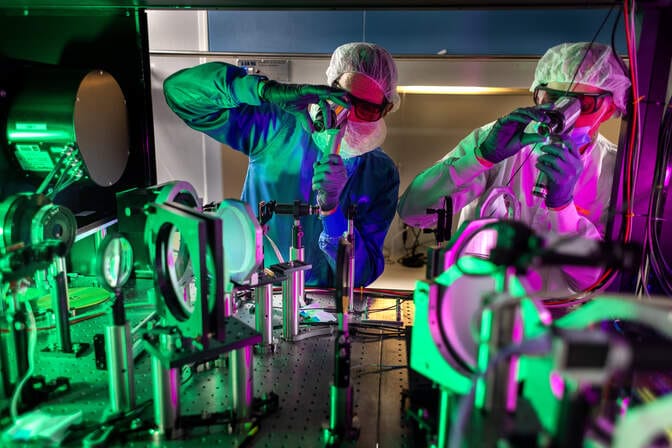University of Michigan successfully tested the most powerful laser in U.S.
The United States has taken a major leap in laser technology with the launch of its most powerful laser to date. The ZEUS laser facility at the University of Michigan has officially fired at a staggering 2 petawatts — equivalent to two quadrillion watts — during its first full-scale experiment.
This level of power, more than 100 times the electricity output of the entire planet, lasts for only a fraction of a second — just 25 quintillionths of a second per pulse, the university said in a statement.
Yet the impact is immense.
“This milestone marks the beginning of experiments that move into unexplored territory for American high field science,” said Karl Krushelnick, director of the Gérard Mourou Center for Ultrafast Optical Science, where ZEUS is housed.
More to read:
[video] Defense startup deploys “laser” shield that neutralizes drones in seconds
Funded by the U.S. National Science Foundation (NSF), ZEUS — short for Zettawatt Equivalent Ultrashort laser pulse System — is a national user facility. That means scientists from across the U.S. and around the world can apply to run experiments there. A panel of experts selects the proposals with the highest scientific value.
A team led by Franklin Dollar, a physics and astronomy professor at the University of California, Irvine, has conducted the first user experiment at ZEUS’s full 2-petawatt power in collaboration with ZEUS scientists.

Scientists taking measurements during the experiment with the ZEUS laser. Credit: University of Michigan
It aims to create extremely high-energy electron beams — similar to those generated by traditional particle accelerators, but within a much smaller setup. The goal is to reach energy levels 5 to 10 times higher than previously achieved at ZEUS.
The team modified the gas cell used in the experiment, filling it with helium. When the laser strikes the gas, it strips away electrons from atoms, forming plasma—a highly energetic mix of free electrons and charged ions. The laser pushes these electrons forward in a method called wakefield acceleration, similar to how a surfer rides a wave.
More to read:
[video] UK to deploy laser cannon for Royal Navy by 2027
By stretching out the gas cell, the electrons have more room to accelerate before catching up to the laser pulse, allowing them to gain even more energy.
Despite its extreme power, the ZEUS laser system is surprisingly compact, fitting into a space about the size of a school gymnasium. The process begins with an infrared laser pulse, which is stretched out using optical components called diffraction gratings. This makes the pulse less intense, allowing it to be safely energized by pump lasers without damaging the equipment.
The pulse, initially up to 12 inches across, is ultimately compressed to a thickness of just 8 microns—thinner than a human hair—before being focused down to under a micron wide to deliver maximum intensity.
More to read:
Archaeologists discover network of cities, roadways deep in Amazon rainforest using laser technology
Later this year, ZEUS is expected to reach another landmark. The laser will shoot particles in opposite directions — when the high-speed electrons collide with another laser pulse coming at them, the resulting energy will seem a million times stronger.
Beyond physics research, ZEUS could benefit fields like medicine, national defense, and materials science.
ZEUS officially opened in October 2023 and has already hosted 11 experiments involving 58 scientists from 22 institutions, including several from overseas.




![[video] Canadian pharmacist unmasked as key operator behind notorious deepfake porn site](/news_img/2025/05/21/news0_mediu.jpg)

